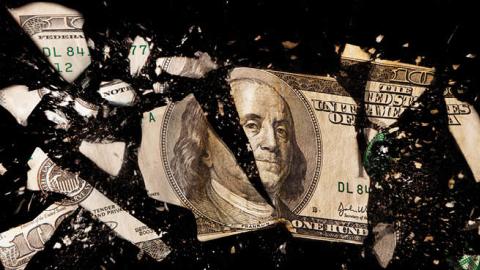Consider the parties you didn’t have this holiday season merely postponed. So advise economists at Goldman Sachs. They reckon that economic growth will accelerate in the second quarter of this New Year as “mass immunization greatly reduces the virus threat, unleashing a spending boom in the high-contact consumer services sector…”. The investment bank’s contribution to holiday cheer includes economic growth at 5.9%, a drop in the unemployment rate from 6.7% to 5.2%, with inflation remaining below 2%. Other forecasters are pithier: we are headed into the roaring 2020s, rather like the 1920s, although with farmers doing somewhat better now than then.
There seems to be broad agreement with this cheery prognosis, with one caveat: “Inflation is the hottest new investor concern,” topped only by Covid as the biggest risk they face, reports Bank of America Global Fund Managers’ Survey. You remember inflation. A rather old-fashioned concern, like falling off the edge of a flat earth. After all, the Federal Reserve’s monetary policy gurus have been trying for years to get the US inflation rate up to its 2% target, and failing, and now expect the rate of inflation to hit a mere 1.6% and 1.7% in 2021 and 2022.
And don’t worry, be happy, even though deficits have taken the national debt close to $28 trillion, and rising. Believers in Modern Monetary Theory (MMT), which include many in the Biden camp and some currently fashionable academics, argue that should mounting deficits, paid for by printing money, threaten to produce an inflationary spiral, our representatives can raise taxes to dampen private spending, or cut government spending. The source of this newly heroic generation of politicians is left to the imagination.
Although hesitant to play the role of a late-arriving Grinch, I feel compelled to remind my readers that politicians have enormous incentives to borrow now to finance goodies for voters, and to leave it to their successors to pay later by raising taxes on future generations or by reducing their benefits. Which their successors are loath to do, and so leave the unpleasant chore of antagonizing voters for their successors. History suggests that borrowing will be handled not by a burst of fiscal probity, but by using inflation-debased dollars extracted from a generation that does not realize it is paying its grandparents’ bills. Meanwhile, party on, print on.
Politicians learned from their dog-eared copies of the works of John Maynard Keynes that we suffer from a “money illusion”. We think of our money in terms of the values printed on the notes, their nominal values, instead of in real terms, which is what those notes can actually buy. Broadly put, if wages and inflation are both rising at a rate of, say 10%, workers will feel richer even though inflation, the silent thief, is reducing the value of their pay checks.
This monetary illusion is one reason politicians do not become inflation-fighters – they prefer constituents who feel richer even though they might not be, rather than constituents who feel poorer even though they might not be. This inherent inflationary bias characterizes most democracies (Germany, which blames the rise of Hitler largely on inflation, is an exception) and is magnified here by three key American policymakers who do not rate inflation a clear and present danger:
* President-elect Biden will increase the power of trade unions, raising employers’ costs, and plans to unleash an infrastructure program that will increase deficits and put price pressure on supplies of raw materials.
* Treasury Secretary Janet Yellen is famous for her willingness to allow the unemployment rate to sink perilously close to levels that result in the bidding up of wages.
* Federal Reserve Board chairman Jay Powell and his colleagues will allow inflation to exceed the traditional target of 2%, on the heroic assumption that the Fed can rein it in should it get out of hand.
All of these policy leanings might be appropriate to a Covid-strangled economy, but by the time they can be acted on we should be living in a different, better world, one in which consumers, many enriched by relief payments they did not need and therefore saved, make up for lost time. With everything from refrigerators to lumber to bicycles to labor in short supply – doubt that and ask any home builder – businesses will quite sensibly raise prices on such supplies as they can get their hands on while a Covid-wounded economy struggles to get back into full production. In short, the demand side of the economy may recover more rapidly than the supply side, putting pressure on the inflation rate. One might say that there will be too many dollars chasing too few goods.
Which brings me to the economist’s savior, “on the other hand.” Three developments to the rescue: imports, investment, and the labor market. Imports, largely from China, are already pouring in to provide consumers with stuff they want at prices they are willing to pay, even though the dollar has weakened. A wall of investment cash is available to entrepreneurs who just might develop products and innovations that fill supply gaps. And with relief payments at an end, workers who left off searching for work might leave their couches and re-enter the labor market, easing shortages and upward pressure on wages and costs.
Read in The Times




















